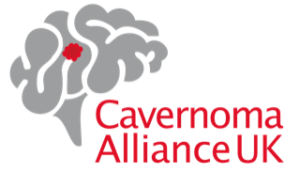Head injury
One of the questions we are asked frequently is whether a head injury or trauma (such as from sport or an accident) can trigger a bleed in a cavernoma, or lead to new symptoms appearing soon after the event. This is a common concern, particularly among those who are physically active or caring for someone with cavernoma.
Current evidence
There has been no high-quality research demonstrating that head injury causes a cavernoma to bleed. The only available evidence is anecdotal, individual reports that trauma might have been a possible risk factor for bleeding including:
Practical implications

Our sister organisation in the US at Alliance to Cure offers this guidance: “This is no reason to reduce aerobic exercise. We do not have enough data to determine whether weight-lifting may place one at higher risk. Researchers don’t know if head trauma, including that which you might experience with contact sports, can cause haemorrhage.”
While it’s natural to feel cautious, particularly around contact sports or high-impact activities, it’s important to keep the evidence in perspective. Physical activity is an important part of physical and mental well-being, and for many people living with cavernoma, it can be safely enjoyed. The type and intensity of activity should always reflect individual health, history of symptoms or bleeds, and professional guidance.
When to seek medical advice
If a person with a cavernoma experiences a head injury, especially if new or worsening symptoms appear afterwards, it’s important to seek medical attention promptly. While a direct causal link between trauma and bleeding hasn’t been established, symptoms should never be ignored. We will continue to monitor research on this topic.
